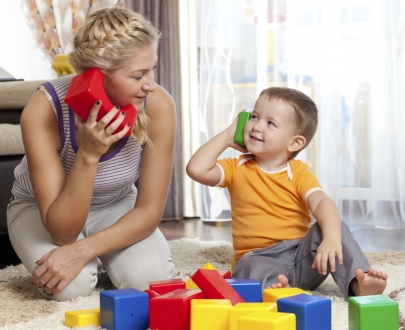
Play is how children learn about themselves, others and their world.
Play stimulates synaptic connections and brain development.
Play is fun!
Rich play includes times both without and WITH adults.
Sometimes “playing” can be in the very distant past for some parents. In fact, there are many adults who never learned how to play or haven’t flexed their play muscle in quite some time. Parents may be uncomfortable initiating play when it feels odd or foreign to them. The more that the parent engages with the child, the more natural it will begin to feel.
Let’s also acknowledge that life is busy and stressful. It is very easy to squeeze out playtime. Dinner to make, house to tidy, a tiny bit of “me” time; all the things that busy people do on top of jobs outside the home.
Here is one way that Parenting Coach Janis Joseph uses to help families fit in play. It is a structure that is not overwhelming to the parent, gives children choice and voice, and teaches everyone excellent self-regulation skills.
A Bucket of Fun
Set It Up
-
Brainstorm with your child a list of play ideas. Write down EVERY one that both child and adult come up with. Need some ideas? Consider your own childhood, search the web, check out the library and ask some friends.
-
Choose 10-15 activities to begin with - ones that both child and adult are willing to do. Write the activities on separate slips of paper or on popsicle sticks.
-
Find a bucket or jar to store the ideas.
Play Time
-
When it is playtime, choose 3-5 activities that you are willing to do, consider things like your time available, your energy level, and the weather outside. In this practice, adults control what goes in the bucket and children get to pull their selection or make the final choice. (So, don’t put anything in that you are not willing to do in that moment.)
-
Allow your child to pull out their idea OR give them all 3-5 of the options from which to choose.
-
Let your child know how much time you have to play and set a timer.
-
When the timer beeps, provide your child with:
-
Honest and positive feedback such as “I had fun playing with you.”
-
A choice to continue playing the game on their own, play something else on their own or help you with your next activity (eg. making dinner).
-
Many parents feel rushed and forget to have fun, so it is good to step out of “adult” comfort zones and remember the joys of childhood. From water balloon fights and jumping through the sprinkler, to jumping on a trampoline and drawing with crayons, parents can model play and in doing so, can understand and appreciate their child in a new way.